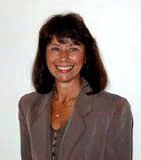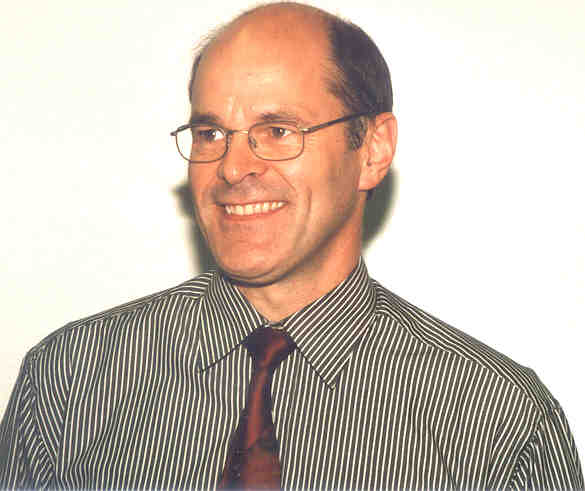
|
International Conference on Global Software Engineering ICGSE 2006 Costão do Santinho, Florianópolis, Brazil October 16-19 2006 

|

|
|
KEYNOTE TALKS Coordination in GSD: Making the Invisible Visible by James Herbsleb, Carnegie Mellon, USA
Communication and coordination are critical in all software projects of any size. When a project is co-located, however, much of the coordination happens invisibly, embedded in the habits and practices that grow up around the development process, and in face-to-face meetings and informal conversations. These "invisible" means of coordination are not consistently available in distributed projects, allowing us to see - by observing the effects of their absence - the nature of coordination among people that software development requires. This understanding, in turn, allows us to design tools and practices that promise to help to resolve coordination issues in any context, co-located as well as distributed. Jim Herbsleb will illustrate with examples from his research group.  Biography: James D. Herbsleb received the MS degree in computer science from the University of Michigan, Ann Arbor, and the PhD degree in psychology from University of Nebraska, Lincoln. He has held positions as a postdoctoral research fellow at the University of Michigan, and a senior member of the technical staff of the Software Engineering Institute at Carnegie Mellon University, Pittsburgh, Pennsylvania. He is an associate professor in the School of Computer Science at Carnegie Mellon University. Previously, he was a member of the Software Production Research Department, Bell Laboratories, Lucent Technologies. He led the Bell Labs Collaboratory project, conducting empirical studies of geographically distributed software development and designing collaborative applications and services. For the past 12 years, he has conducted research and published in the areas of collaborative and open source software engineering, human-computer interaction, and computer supported cooperative work. For the last five years, his work has focused on collaboration technology and processes to support large globally distributed software development projects. Biography: James D. Herbsleb received the MS degree in computer science from the University of Michigan, Ann Arbor, and the PhD degree in psychology from University of Nebraska, Lincoln. He has held positions as a postdoctoral research fellow at the University of Michigan, and a senior member of the technical staff of the Software Engineering Institute at Carnegie Mellon University, Pittsburgh, Pennsylvania. He is an associate professor in the School of Computer Science at Carnegie Mellon University. Previously, he was a member of the Software Production Research Department, Bell Laboratories, Lucent Technologies. He led the Bell Labs Collaboratory project, conducting empirical studies of geographically distributed software development and designing collaborative applications and services. For the past 12 years, he has conducted research and published in the areas of collaborative and open source software engineering, human-computer interaction, and computer supported cooperative work. For the last five years, his work has focused on collaboration technology and processes to support large globally distributed software development projects.Scale Changes Everything by Linda M. Northrop, SEI, U.S.A.
To be described.  Biography: Linda Northrop has more than 35 years of experience in software development as a practitioner, researcher, manager, consultant, and educator. She currently is director of the Product Line Systems Program at the SEI where she leads the work in software architecture, software product lines, and predictable component engineering. She recently led a year-long study involving leaders in the software community to define technical and social challenges associated with ultra-large-scale systems. The resultant report, Ultra-Large-Scale Systems: The Software Challenge of the Future (ISBN 0-9786956-0-7), was published in June 2006 Before joining the SEI, she was associated with both the United States Air Force Academy and the State University of New York as professor of computer science, and with both Eastman Kodak and IBM as a software engineer. Biography: Linda Northrop has more than 35 years of experience in software development as a practitioner, researcher, manager, consultant, and educator. She currently is director of the Product Line Systems Program at the SEI where she leads the work in software architecture, software product lines, and predictable component engineering. She recently led a year-long study involving leaders in the software community to define technical and social challenges associated with ultra-large-scale systems. The resultant report, Ultra-Large-Scale Systems: The Software Challenge of the Future (ISBN 0-9786956-0-7), was published in June 2006 Before joining the SEI, she was associated with both the United States Air Force Academy and the State University of New York as professor of computer science, and with both Eastman Kodak and IBM as a software engineer. Experience with Establishing Offshore Development Sites by Reinhold Jost, Siemens, Germany
Siemens Communications has more than twenty years experience with offshore software development. Initially, from headquarters in Munich, Germany, offshore sites were set up in Vienna, Austria, San Jose, California, and Boca Raton, Florida. Ten years ago, development was started in Bangalore, India, and more recently in Brazil, Greece, and China. Usually the offshore site was initially asked to modify an existing product for the local market, and then later became a competence center that contributed to new products. Although similar approaches have been used, we have learned that what works well in Curitiba may not work so well in Athens. This presentation discusses our experience with setting up new offshore product development sites, including some of the cultural issues to pay attention to when expanding into a new country. Over time, Siemens Communications has come up with a combination of global software development practices that can be characterized as both traditional and agile. The global software development processes that are used put a strong emphasis on early phase activities such as requirements engineering, software architecture design, project planning, platform development, rapid prototyping, and model-driven test generation. Early phase development teams are collocated, but include staff from where the large scale development work will be done. During implementation, projects can become large and distributed over multiple sites. Monthly sprints are planned such that vertical slices of the architecture are implemented incrementally. This presentation summarizes one approach to global software development that has been improved for Siemens Communications based on many years of experience.  Biography: Reinhold Jost is President of the application business unit within the
Communication group of Siemens AG. He is responsible for products that help end users enhance their personal and team performance through intuitive use and easy customization of specific work flows. These products are tightly integrated into existing information technology environments. The product portfolio ranges from soft clients to call centers and from unified communications to vertical solutions. Biography: Reinhold Jost is President of the application business unit within the
Communication group of Siemens AG. He is responsible for products that help end users enhance their personal and team performance through intuitive use and easy customization of specific work flows. These products are tightly integrated into existing information technology environments. The product portfolio ranges from soft clients to call centers and from unified communications to vertical solutions.
After studying communication technology at the University of Trier, Mr. Jost worked for the first seven years of his professional career as a hardware engineer. Since joining Siemens in 1984, he has held a number of management positions in all areas of product development. He led the restructuring and transformation activities within research and development, and he successfully established a customer-oriented agile development process and a Service Oriented Architecture platform. In this effort, he merged several organizations that were acquired by Siemens, established new development sites, and created a global development community consisting of ten sites in six countries. |